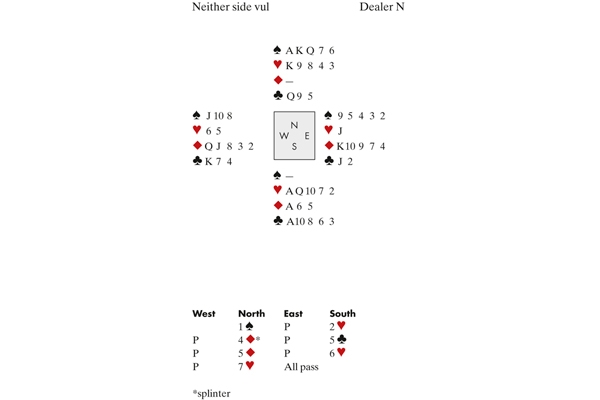I haven’t played rubber bridge for a few years now (the demands of young children), but recently I’ve been hearing the siren call again — and decided to pop into my old haunt TGRs. I wanted to watch for a while, rather than play (I’m too rusty), and what great timing it turned out to be. The club’s manager, the brilliant Artur Malinowski, had just landed in a grand slam:
West led a trump. Artur (South) drew trumps in two rounds. If spades break 4-4, then one spade ruff will provide four discards for the losing clubs. Artur saw an additional chance. He cashed three top spades: West discarded first the ♠8, and then the ♠J and ♠10. Now came the critical decision: should he ruff a spade and hope for a 4-4 split — or play West for ♠J 10 8? In terms of probability, a 5-3 split is more likely than a 4-4 one; but a player of Artur’s calibre always looks for extra clues — and, as he explained to me later, he found two. First, holding ♠J 10 9 8, West might have considered leading the ♠J. Second, in his experience, almost no player discards the ♠8 first from ♠J 10 9 8: they choose a higher ranking card. Backing his judgment, Artur played the ♠7 from dummy, and when East didn’t cover, he let it run. 13 tricks in the bag
Susanna Gross
Bridge | 1 August 2013

issue 03 August 2013





Comments